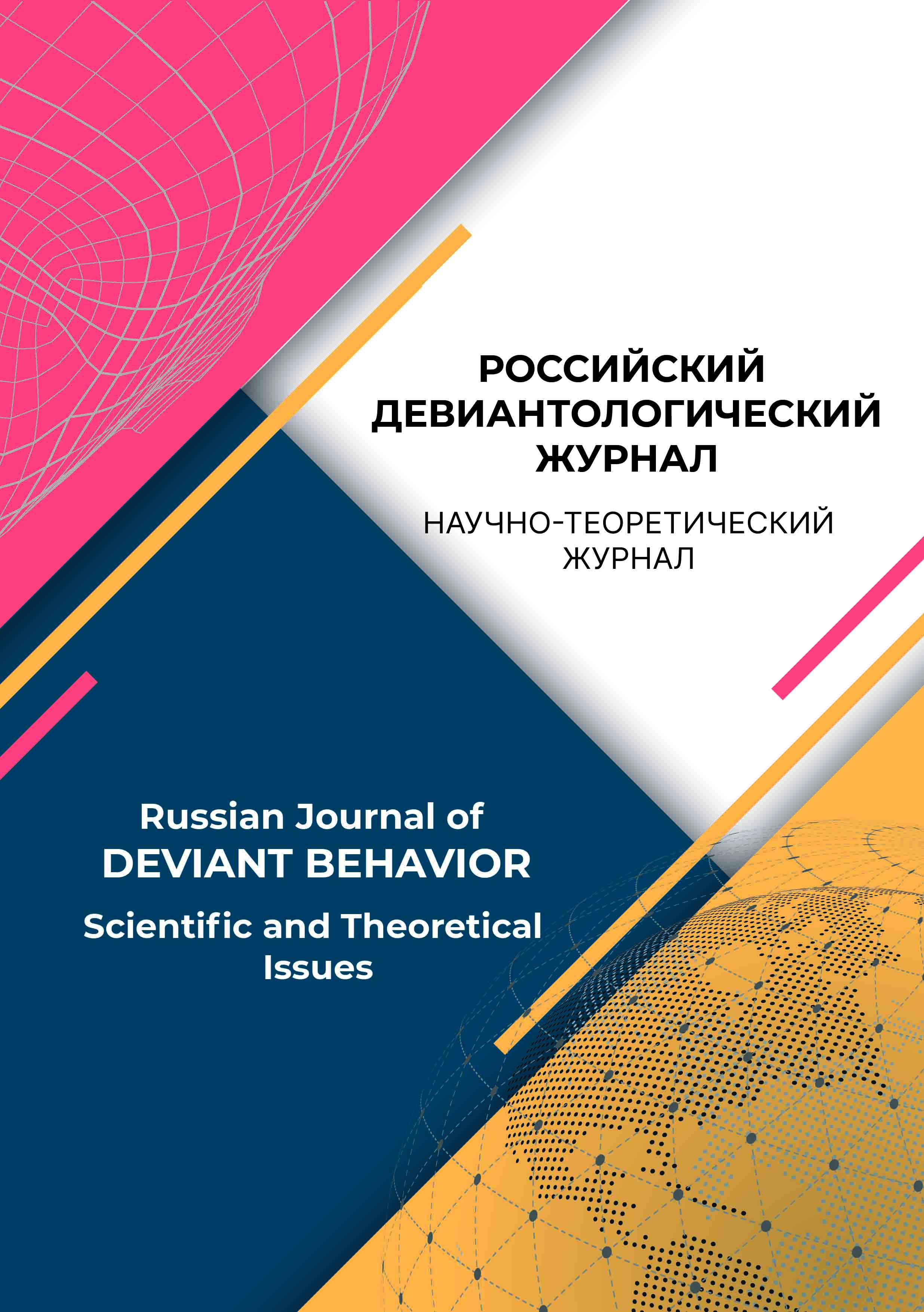Krasnodar, Krasnodar, Russian Federation
from 01.01.2022 until now
Krasnodar, Krasnodar, Russian Federation
UDC 159.9.072
CSCSTI 15.01
Russian Classification of Professions by Education 37.00.00
Russian Library and Bibliographic Classification 88
Russian Trade and Bibliographic Classification 83
Introduction. The modern development of the personality, the stages of its socialization and the peculiar perception of social norms of behavior are realized in conditions of active processes of informatization and computerization. The related changes in everyday life, communication, organization of activities bring both constructive and destructive factors. It is difficult to dispute the fact that information and communication technologies have become so firmly established in the life of a modern person that they are no longer characterized as a way to simplify activities, but as a complete environment for the formation of personal characteristics and the implementation of communication. This situation leads to the fact that active users of information and communication technologies begin to be affected by content of various content, including destructive one. Minors are the most vulnerable group of users of such technologies due to their personality and age peculiarities. In this regard, the law enforcement system and public organizations are faced with the task of creating safe conditions for minors to use the possibilities of the information and communication environment. Objective. This study was carried out to substantiate the relevance of studying the psychological factors of a subjective and objective nature that contribute to the involvement of minors in destructive activities through information and communication technologies. Methodology, methods, techniques. Universal for any field of scientific cognition, system-structural and qualitative approaches were used to conduct research on the chosen topic. The research methodology is based on modern scientific, methodological and socio-psychological characteristics of formation and development of the destructive behavior of minors. Results. The results of the conducted scientific research indicate the need for a comprehensive study of the problem and the preparation of scientific support for preventive activities to prevent deviant behavior of minors. Scientific novelty. The analysis of the scientific literature led to the conclusion that the existing insufficient development of the problem chosen for the study, which substantiated the scientific novelty of the results presented in this article. The relevance of the upcoming research is revealed, reflecting the need for their implementation. Practical significance. The practical significance of the study lies in the fact that today, due to the insufficient development of this topic, there are certain difficulties in the implementation of prevention of deviant behavior among minors, and the results obtained during the study will fill the existing gap and increase the efficiency of work with minors to prevent their involvement into deviant activities.
information and communication technologies, personality, minor, destructive influence, deviant behavior
1. Kvashis, V. E., Il’nickij, A. S. (2021). Sovremennye formy proyavleniya kriminal’noj ideologii v seti Internet. Nauchnyj portal MVD Rossii, 2 (54), 26-31.
2. Lysak, I. V. (1999). Psihicheskie osnovy destruktivnoj deyatel’nosti cheloveka. Izvestiya TRTU, 2 (12), 219-223. EDN: https://elibrary.ru/KWTZXP
3. Sundiev, I. Yu., Konoplin, A. B., Nikitina, M. A., Feoktistova, E. E., Kuznecov, A. G., Novosel’cev, O. I., Demkovec, O. V., Brekhov, D. A., Karajman. Yu. N. (2021). Mekhanizmy protivodejstviya organov vnutrennih del (policii) gosudarstv-uchastnikov SNG vovlecheniyu nesovershennoletnih v destruktivnye gruppy v seti Internet: analiticheskij obzor s predlozheniyami. Moskow: FGKU «VNII MVD Rossii».
4. Teregulova, O. A. (2021). Psihologicheskie usloviya profilaktiki vovlecheniya nesovershennoletnih v pravonarusheniya: avtoref. dis. ... kand. psihol. nauk. Moskow.
5. Little, M., & Steinberg, L. (2006). Psychosocial Correlates of Adolescent Drug Dealing in the Inner City. The Journal of Research in Crime and Delinquency, 43 (4), 357-386. https://doi.org/10.1177/0022427806291260
6. Međedović, J. (2017). The profile of a criminal offender depicted by HEXACO personality traits. Personality and Individual Differences, (107), 159-163. https://doi.org/10.1016/j.paid.2016.11.015
7. Widiger, T. A., & Costa Jr., P. T. (Eds.) (2013). Personality Disorders and the Five-Factor Model of Personality (3rd ed.). American Psychological Association. https://doi.org/10.1037/13939-000














